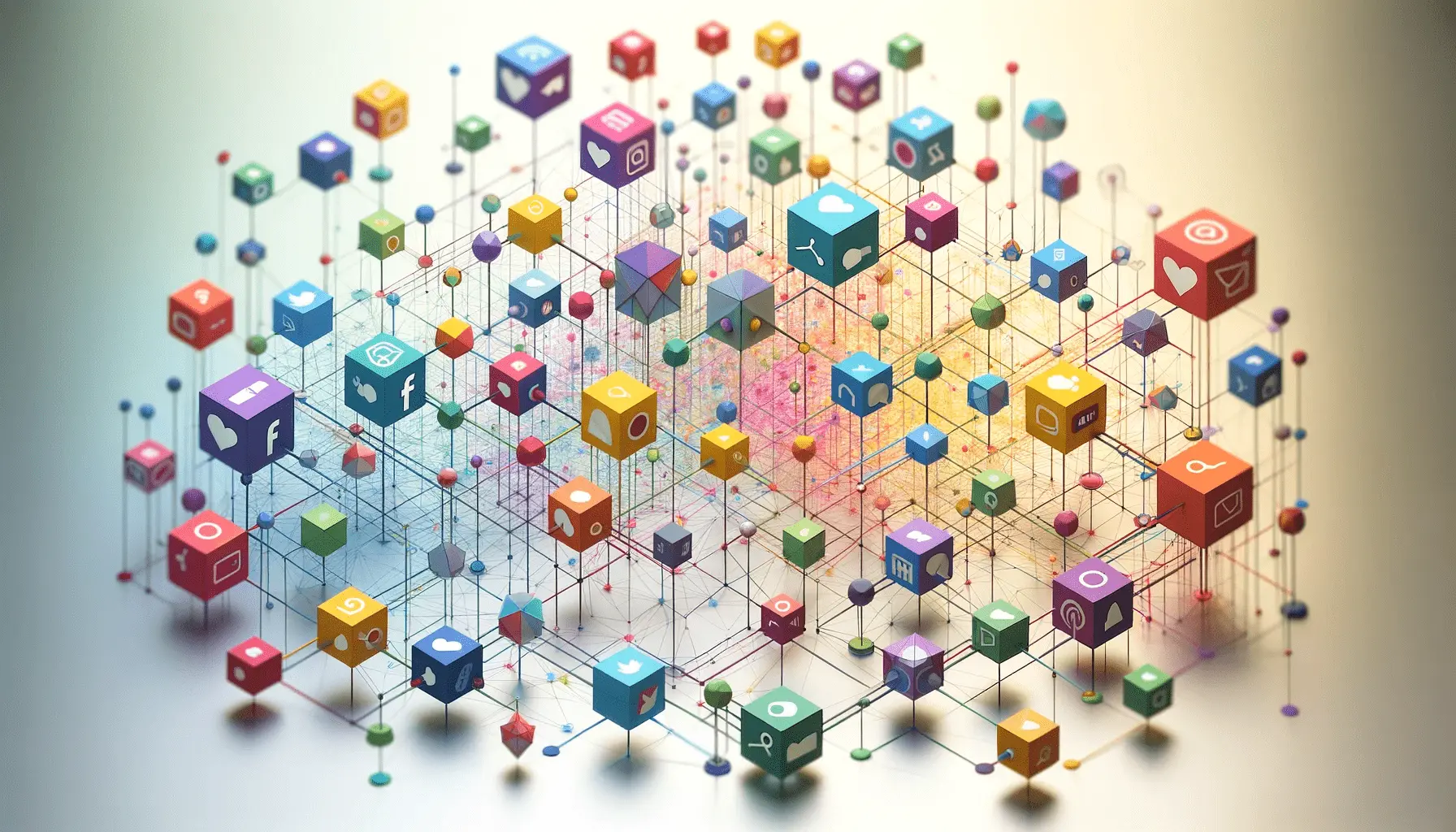Not just a place to conduct professional networking, LinkedIn has today turned into a growing community platform where professionals from all sectors come together for connecting over ideas and collaborating.
Gone are the days when creating a community on LinkedIn was reserved only for those who could, it is now an expert strategy of how you can deliver better value to your ideal audience and form lasting connections.
As an individual or a business, your community on LinkedIn is going to have such a huge impact in the long run for visibility and influence.
If so, this post will give you 7 key ways to build a thriving LinkedIn community.
First thing first, we will have an overview of the incredible power mastered by LinkedIn communities and how it is considered as one of the good places to build a community.
Next, we’ll discuss tactical ways you can help yourself actually get found on LinkedIn.
- Why LinkedIn Communities are so Powerful and How They Work
- Making Your Profile More Visible
- Making Your LinkedIn Bio Crisp and Catchier
- Demonstrating Your Expertise Through Content
- Using LinkedIn Features to Build Community Growth
- Community Engagement Sustaining Content Strategies
- Growth Hacking Your LinkedIn Community: Measuring and Optimization
- Closing Thoughts on Developing a Booming LinkedIn Community
- Learn: FAQ on How to Build a LinkedIn Community
Why LinkedIn Communities are so Powerful and How They Work
LinkedIn is the best platform for creating your own community.
However, what does make LinkedIn the perfect community environment?
All in all, that’s the magic mix of professional focus and social interactivity into which LinkedIn excels.
You can’t say the same about all social networks out there; LinkedIn is optimized to make professional connections.
Therefore, it is a conducive environment for professionals to unite under the same mission and provide inspiration as well as assistance to grow.
Arguably one of the biggest advantages of a LinkedIn community is engagement quality.
For instance, LinkedIn is meant for professional development and users use it with a keen interest in industry trends/business opportunities.
So when you get involved in building here, it’s much more likely the community that does join is actually interested and excited by what you offer — i.e., they want to engage in conversations of substance.

LinkedIn offers a dynamic and engaging space ideal for building professional communities.
How LinkedIn is Ideal for Community Building
LinkedIn — the right platform for community building, since it is a social network that promotes meaningful conversations and professional development.
On a website like this one, content can easily get lost amidst the noise but LinkedIn’s algorithmA set of rules or processes that LinkedIn uses to rank and display content. promotes engaging and valuable articles, which is good for communities.
So when you publish great content or get involved in discussions with your community, it will be more likely seen by the right people.
In addition, there are a number of utilities that LinkedIn offers that make managing and growing your community easier.
- Use features such as LinkedIn Groups to build a dedicated area where members can interact and discuss.
- You can also host virtual meetups, webinars, or live chats with the help of LinkedIn Events so that your community remains engaged.
This, alongside the professional focus of LinkedIn, is where communities thrive.

Active engagement is crucial for building a thriving LinkedIn community.
The Requirement of Engagement in a LinkedIn Community
Engagement is the life-blood of any online community, and LinkedIn is no different.
An engaged, participative culture is critical for your LinkedIn community to succeed.
In other words, you need to continue producing content on a regular basis, comment and reply frequently in the comments section, do something that will make people talk between themselves.
In a positive feedback loop, the more valuable your community becomes to its members, the easier you draw in more people.
Moreover, an important contribution can be made to building trust and credibility by this active engagement.
Consistency is key — if community members see that you are contributing quality content and engaging with them on a regular basis, they will be more likely to perceive you as an honest expert in your area.
This not only gives your community a boost but it also increases your personal or brand image on LinkedIn.

Precise targeting and strategic connections are key to defining your LinkedIn audience.
Defining Your Target Audience on LinkedIn
Step 1 — Define your target community: You cannot build a successful LinkedIn community without knowing what is your primary interest.
Who are the people you welcome in your community?
- What industry, job role, or geography are they professionals from?
- This is important because it enables you to customize your content and engagement strategies for the needs of each segment in your target audience.
To find your target market on LinkedIn, look at who already follows you and connect with them.
Check out their profiles to discover what industries they work in, the type of content that resonates with them, and communities or groups that attract like-minded individuals.
Or you can go with the advanced search functionality offered by LinkedIn to find and link up with people matching your target audience parameters.
Know your audience, and build a community that speaks to their passion & respective professional needs.
The Ultimate Guide to Building a Magnetic LinkedIn Profile that Attracts Prospects
Your LinkedIn profile is the foundation of your online presence and serves as a catalyst to get members into your community.
A good profile doesn’t just show off what you do, but also how the other party might get in touch with you to be associated with your work and community.
In this post, we will walk through the definitive elements of an attractive and magnetic LinkedIn profile that generates new community recruits by default.
LinkedIn is the best platform for creating your own community due to its professional focus and social interactivity.

Optimizing your LinkedIn profile is essential for enhancing its visibility.
Making Your Profile More Visible
To build a community, you have to be visible on LinkedIn.
The key is making your profile as visible as possible; therefore, optimize it with keywords associated with both the industry you are in and the community initiatives you focus on.
This includes your headline, summary, as well as your experience, skills, and endorsements sections.

Strategic keyword usage enhances visibility and communicates expertise within a LinkedIn community.
Using Keywords to Explain Your Expertise and Value to Your Community
Let people know what you offer in the headline: Be certain that your headline reflects accurately who you are and describes briefly about your community.
The headline should be attention-grabbing and must contain relevant keywords.

Consolidating ideas and insights is key to summarizing and concluding discussions within a LinkedIn community.
Summary:
Write a short summary explaining about you and your community.
Highlight your achievements and how they can be tied back to community building efforts.

Showcasing relevant experiences is essential for illustrating professional growth on LinkedIn.
Relevant Experiences:
Outline your key roles, ensuring you target positions that align with the focus of your respective community.
Use action-oriented language and quantify your accomplishments if possible.

Skills and endorsements enhance credibility and professional growth on LinkedIn.
Skills & Endorsements:
Pick the skills that are most important to your community and ask for endorsements from people who work with you.
Optimizing your profile with industry-specific keywords is crucial for building a community on LinkedIn.
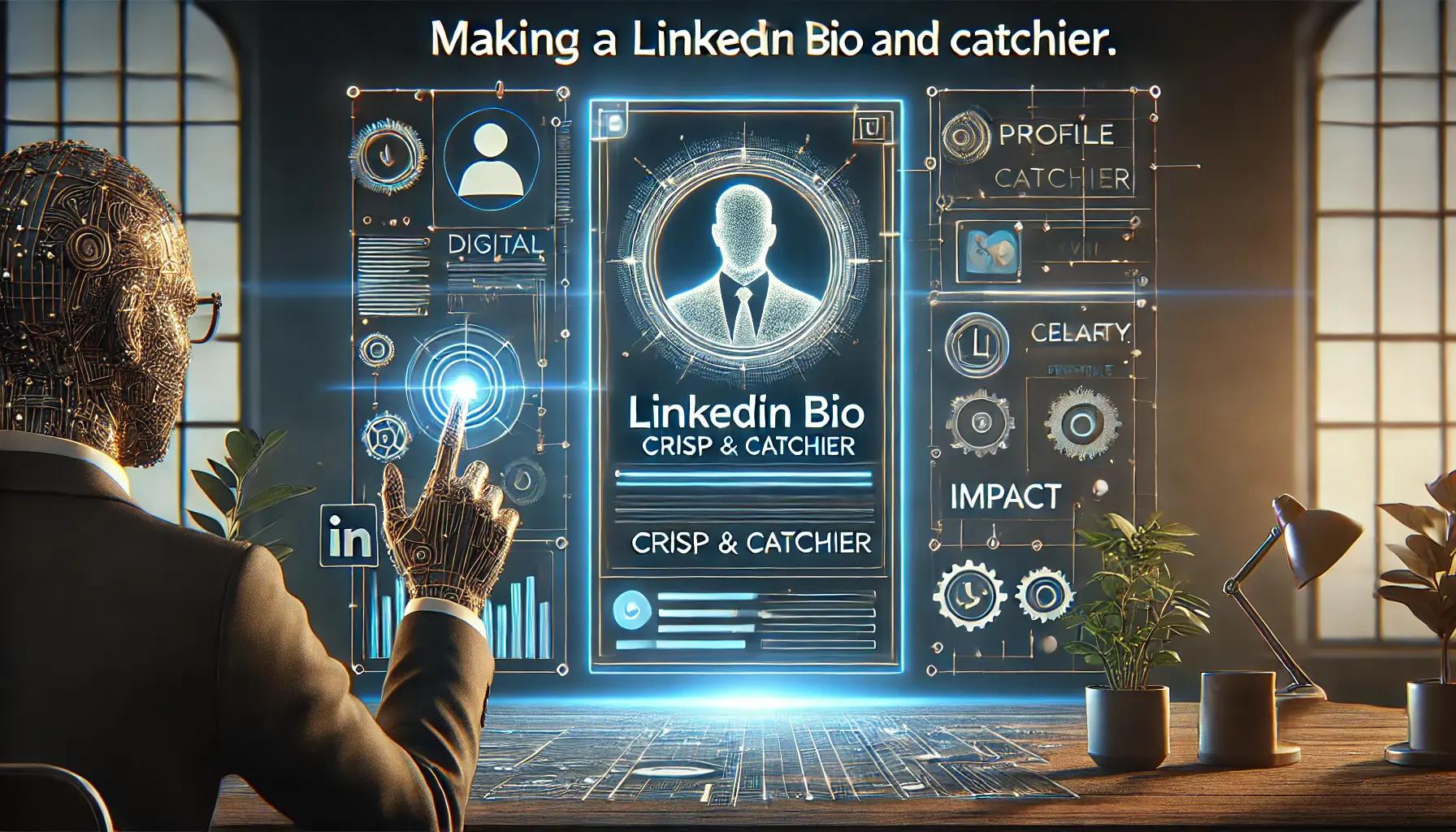
Refining your LinkedIn bio for clarity and impact is essential for making a strong first impression.
Making Your LinkedIn Bio Crisp and Catchier
A LinkedIn bio should be a glimpse of your core value and mission; it must be impactful but brief, compelling people to reach out to you and join your community.
An effective bio encapsulates your soul, spirit, and the value you offer to your community.
Keep in mind when writing your bio how you are different from all the other people out there doing what you do.

Your value proposition highlights the unique strengths and offerings that set you apart in a professional context.
Value Proposition:
Show the things you are passionate about, what drives your mission in life, and how these fit with your community.
Make it personal and relatable to your readers so they can connect with you.
Remember, your bio is usually the first thing people see of you, so make it count.
Your LinkedIn bio should encapsulate your core value and mission, making it impactful but brief.

Sharing valuable content is key to demonstrating expertise and establishing thought leadership on LinkedIn.
Demonstrating Your Expertise Through Content
High-Quality Content Highlighting Your Expertise — One of the best ways to drive members to your LinkedIn community is by putting out top-notch content that showcases what you know.
By consistently producing posts, updates, and communications, you show that you are not only well-versed in your field but also committed to your community.
It helps you stand out as a thought leader and also makes your community more attractive to potential members.

Exchanging insights, tips, and industry trends fosters collaboration and thought leadership on LinkedIn.
Share Insights, Tips, and Industry Trends:
Share insights, tips, and industry trends that matter to your community.
Similarly, you should create content related to common challenges people in your community face and offer possible solutions or discussions about them.
Delivering high inherent value = members interested in your community.
Regularly publishing high-quality content that highlights your expertise is essential for attracting community members.

LinkedIn features like groups, events, and connections are essential tools for fostering community growth and collaboration.
Using LinkedIn Features to Build Community Growth
There are a number of features on LinkedIn through which you can effectively manage and grow your community.
As you can see from the examples below, when used correctly, these tools will help maintain your positioning as an attractive and engaging environment for community members.
Here are some LinkedIn features to increase your community growth:

LinkedIn Groups are powerful tools for fostering meaningful conversations that lead to conversions.
Using LinkedIn Groups to Start Conversations that Convert
Groups on LinkedIn are a great way to provide your community members with specific places where they can go and create targeted discussions.
By creating a LinkedIn Group around a particular subject or passion, you can foster interesting discussions amongst like-minded professionals to keep the community active and engaged.
- Form a sub-group: Instead of trying to appeal to everyone, consider specializing in an industry or profession that matters most to your target market. This helps in attracting active community members who are genuinely interested in the topic.
- Drive engagement: Post discussion prompts, ask questions, and share relevant content to get members of the group coming back for more. Active engagement is key to the growth of the group.
- Moderate discussions: Keep the group spam-free and welcoming by moderating posts, removing spam, and addressing any violations of guidelines promptly.
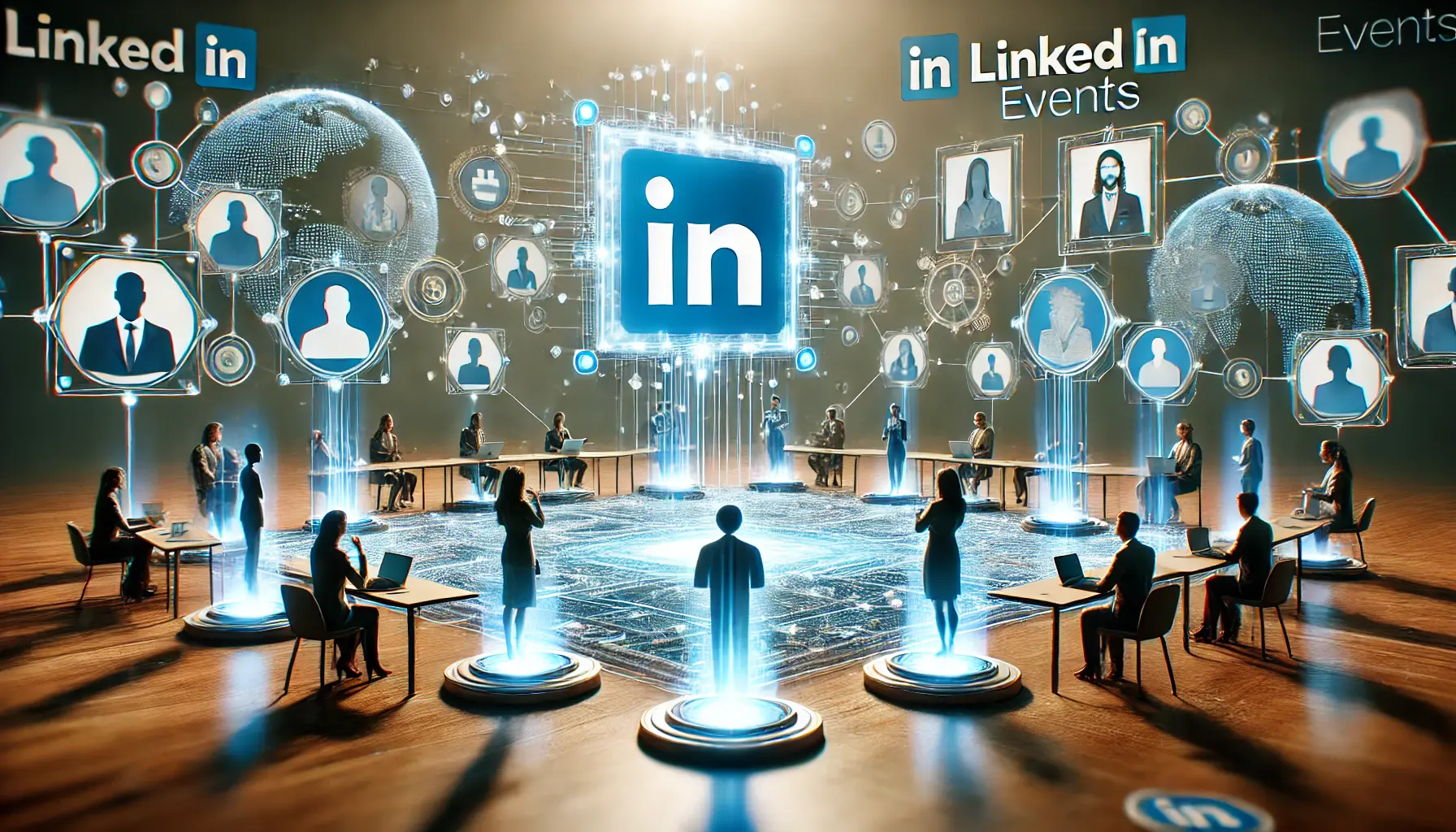
LinkedIn Events are effective tools for engaging your audience through virtual methods like live sessions and webinars.
How to Use LinkedIn Events as a Virtual Method of Engaging Your Audience
Using LinkedIn EventsA feature that allows users to organize virtual meetups, webinars, or live sessions. enables you to stay connected with your community via virtual meetups, webinars, and live sessions.
These events lead to real-time interactions and help individuals foster stronger connections within the community.
- Host relevant events: Organize activities that are centered around the interests of your community. These could include industry-specific webinars, panel discussions, or Q&A sessions.
- Promote the event: Use your LinkedIn network, group, and profile to promote the event as much as possible. Encourage members to invite their connections as well.
- Engage during the event: Keep the conversation engaging with participants by interacting during the event. Answer questions, acknowledge comments, and encourage discussions to make the event more engaging.

LinkedIn Polls and Surveys are effective tools for gathering valuable feedback and insights from your audience.
How to Get Feedback Using LinkedIn Polls and Surveys
You can use polls and surveys to get feedback from your community.
These tools help you understand your members’ needs and preferences, allowing you to tailor your messaging strategy and content accordingly.
- Create compelling polls: Ask questions that are relevant to your community and encourage members to share their opinions. This not only provides valuable insights but also increases interactivity within the community.
- Examine the results: Utilize the knowledge gained from polls and surveys to make informed decisions about the direction of your community. This could involve tweaking your content strategy, introducing new topics, or planning future events.
- Follow through on feedback: Show your community that their input is valued by implementing changes based on their feedback. This builds trust and encourages further cooperation.

LinkedIn Messaging is a powerful tool for fostering direct, one-on-one professional relationships.
Using LinkedIn Messaging for Direct Relationships
When you want to speak directly with your community members and think of B2BStands for 'Business to Business,' referring to transactions or relationships between two businesses. conversations, LinkedIn Messaging is the best tool for it.
With immediate outreach, you can build more personal relationships and foster a stronger sense of community.
- Customize your message: When connecting with other community members, make sure to personalize your messages to make them feel valued. Mention their specific contributions or interests in the community.
- Keep the conversation alive: Continue following up on past interactions. Regular touchpoints show your members that you care about their experience and success within the community.
- Provide resources: Use LinkedIn Messaging as a way to offer support and guidance, whether it’s answering questions or providing valuable resources. This enhances your status as a community leader.
LinkedIn features like Groups and Events are powerful tools for engaging and growing your community.
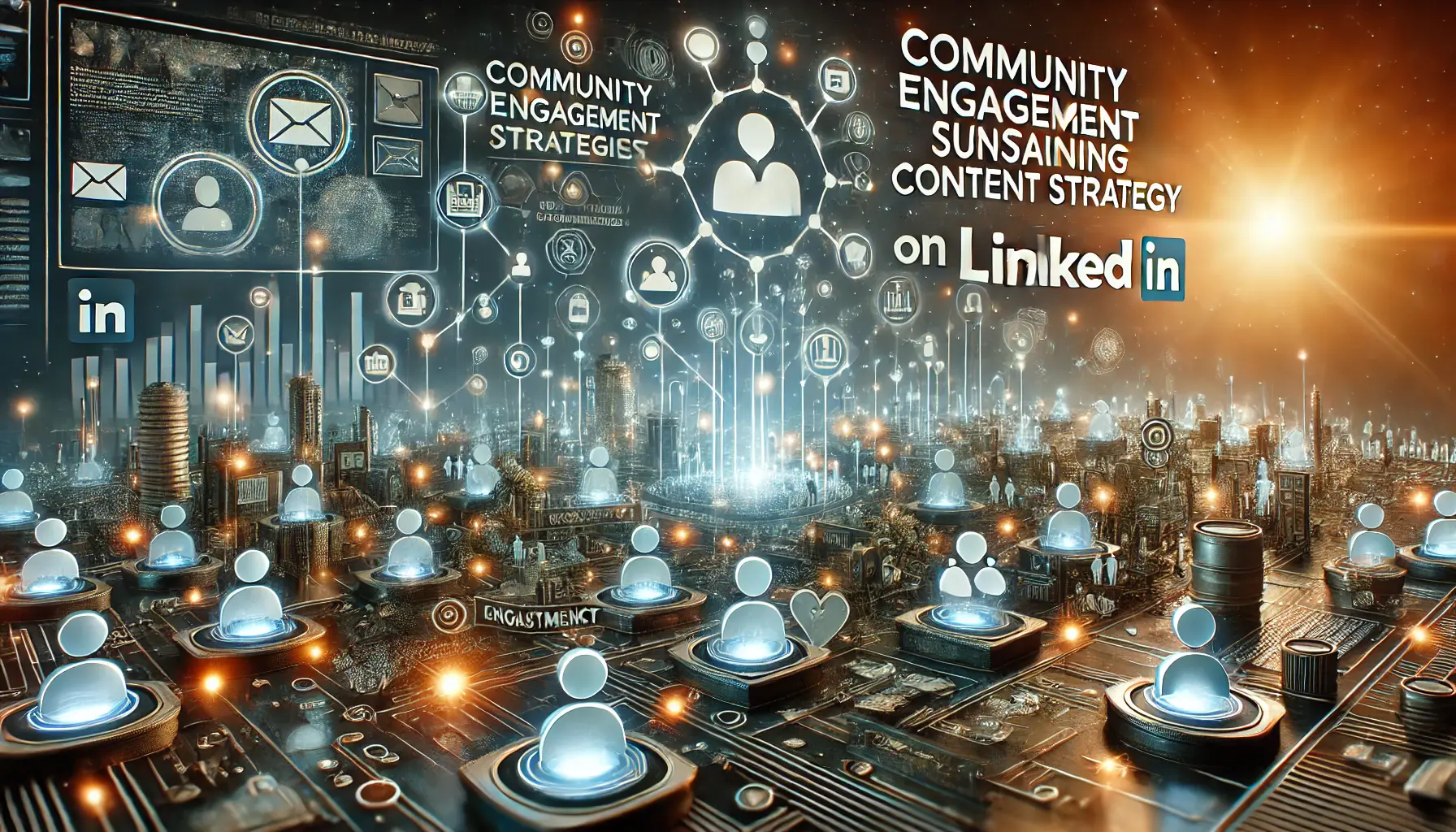
Consistent and dynamic content strategies are key to sustaining community engagement on LinkedIn.
Community Engagement Sustaining Content Strategies
Building a lively LinkedIn community isn’t just about getting people to join; it’s about keeping them engaged for the long term.
In order to do this, you need content strategies that will connect with your audience and maintain their interest.
The following content strategies will help you to maintain and build your LinkedIn community.
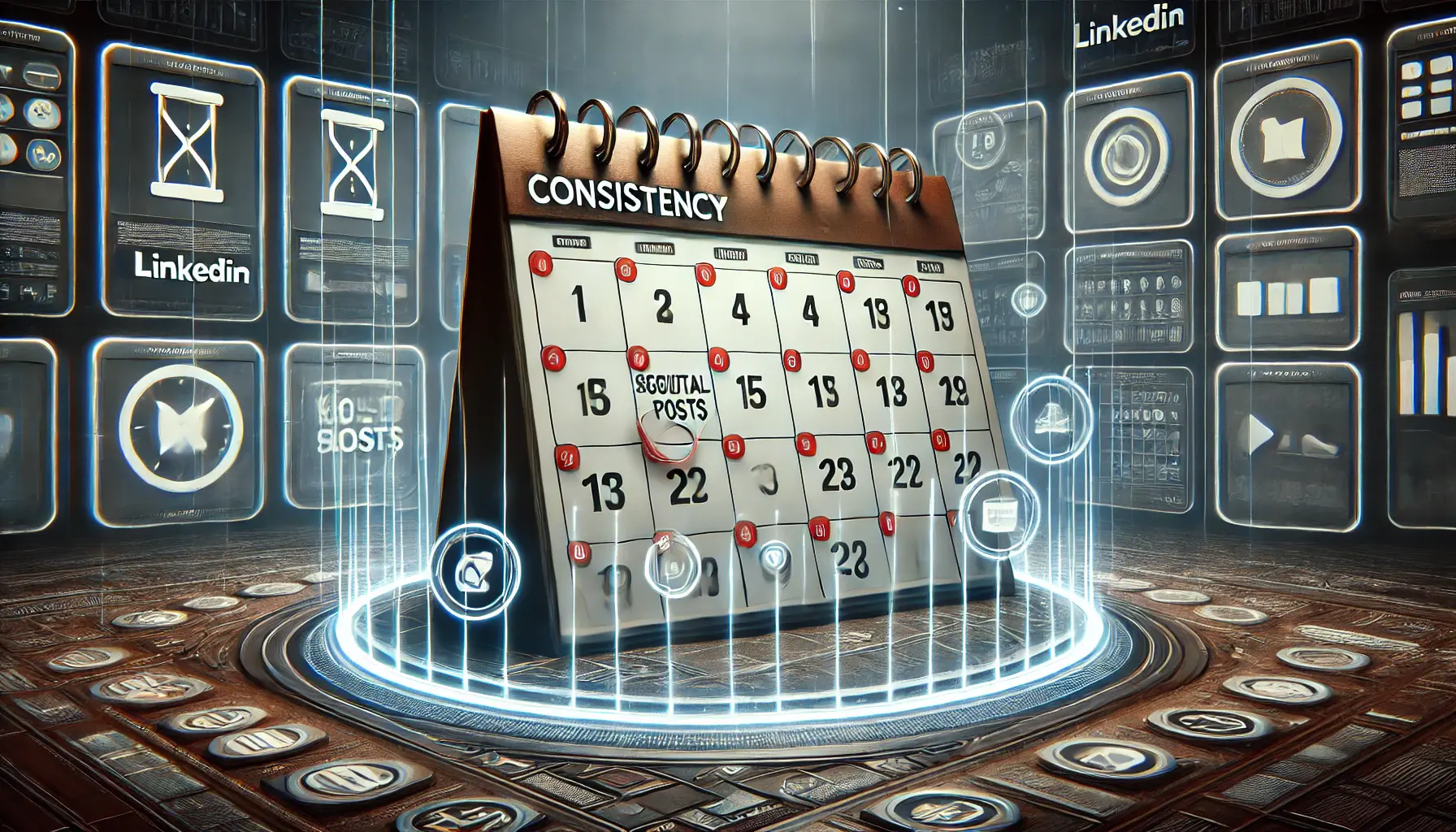
Maintaining consistency in your posting schedule is essential for strategic content planning on LinkedIn.
Consistency is the Key to a Posting Schedule
The key to not letting engagement in your LinkedIn community die is consistency.
Maintain a Consistent Posting Schedule to Retain Users.
By posting regularly, you can keep your community members informed and engaged.
If you maintain a steady stream of content, your community stays engaged and knows when to expect new posts.
- Schedule your posts: Establish a content calendar for what to post and when. This way, you keep track of your work and ensure the content stays relevant to what matters most in your online community.
- Balance frequency and quality: You must find the perfect balance of posting frequently enough to be noticed, while also making sure that what you are sharing is worth clicking on. All of your content should add value to the community.
- Monitoring engagement: Track what kind of posts trigger the best engagement and align your schedule accordingly. This allows you to spend more time creating content people actually care about.

Sharing value-driven content consistently is key to maintaining engagement and delivering professional value on LinkedIn.
Consistently Share Value-Driven Content
Content that is rich in value is content that helps your community learn something, gain insights, or even feel inspired.
The better you are at sharing content that speaks to the interests and desires of your community, the more reasons they have to stay engaged.
- Commit to relevance: Post content that aligns with the objectives and motivations of your community. This might include industry news, how-to guides, case studies, or thought leadership pieces.
- Create conversation: Pose questions, seek input, and spark dialogue within your posts. This not only drives engagement but also fosters a sense of community.
- Use multimedia: Include images, videos, and infographics in your posts to make them more visually appealing and engaging for your community.

Fostering member contributions and conversations is vital for building an active and engaged LinkedIn community.
Promoting Member Contributions and Conversations
Your LinkedIn community will thrive as much as its members feel engaged.
One of the best ways to foster this sense of involvement is by enabling member contributions and discussions.
- Guest posts: Allow other users to contribute their own content or stories to the group. This not only broadens the range of content but also empowers members to become contributors to the community.
- Feature member wins: Celebrate the achievements of your community members. This can be done through shout-outs in posts or dedicated features.
- Start conversations: Regularly start engaging conversations with your community around topics that matter to them. Be sure to ask open-ended questions that allow for thoughtful responses and dialogue.
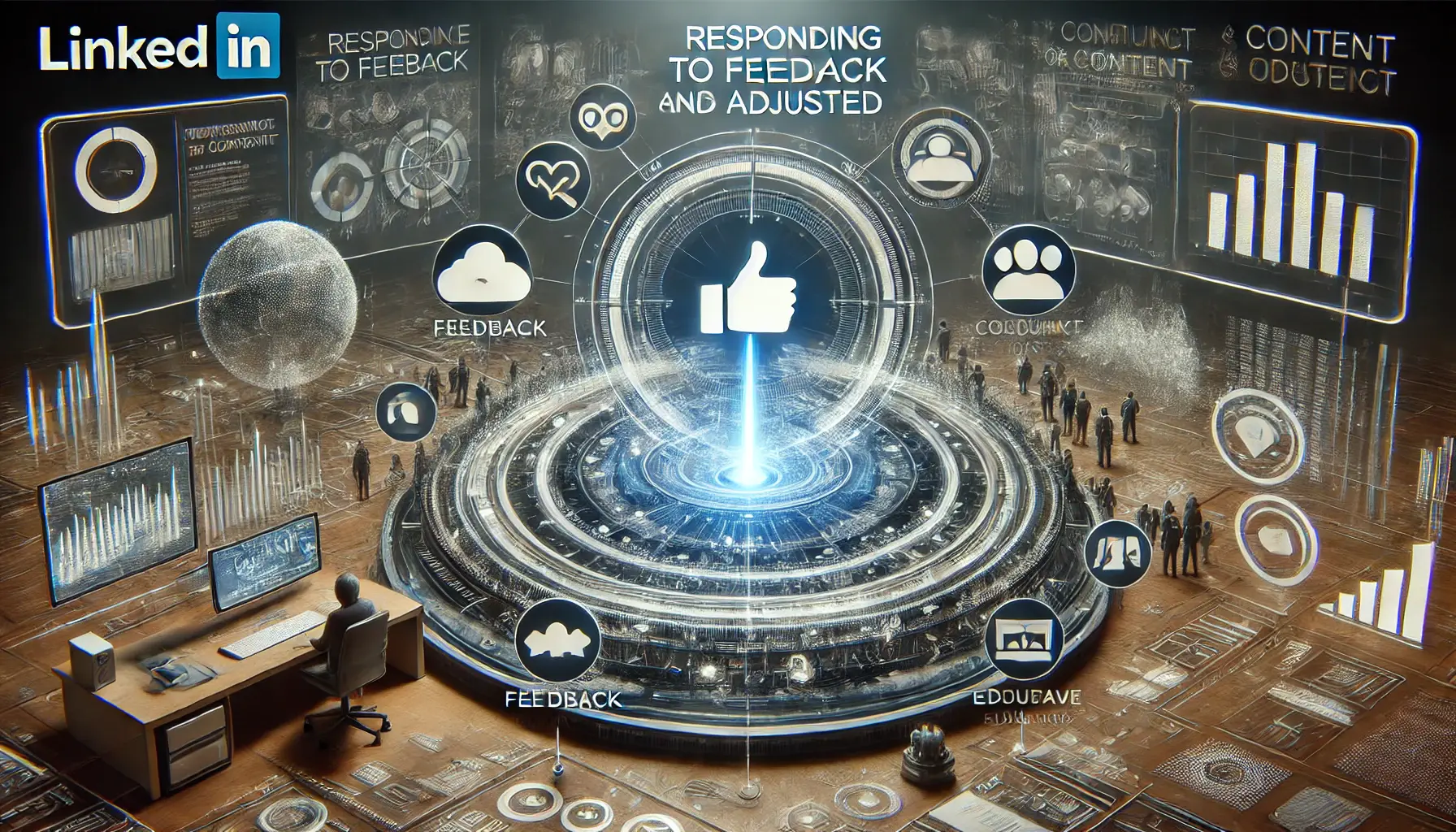
Adapting content based on community feedback is essential for continuous improvement and engagement.
Responding to Feedback and Adjusting Content
Listening to your community is crucial for its growth and sustainability.
Engage with feedback and adapt your content strategy to ensure you continue providing value to members of your community.
- Seek feedback often: Poll your community for their opinions on the content you publish as well as the overall direction of the community.
- Acknowledge and act: Create feedback loops by allowing your community to provide you with comments, messages, or poll responses. This makes them feel heard and keeps them engaged.
- Adapt and evolve: Don’t be afraid to change your content strategy according to the feedback you receive. Flexibility helps you better serve an ever-changing community.
Consistency in posting and engaging with your community is key to sustaining long-term engagement.

Strategic measurement and optimization are key to growth hacking your LinkedIn community.
Growth Hacking Your LinkedIn Community: Measuring and Optimization
Manufacturing a killer LinkedIn community demands constant iteration.
In order to guarantee the growth and continued value of your community, you need a regular method for revisiting data points, gaining insight from feedback, and making iterative tests to improve how members interact with your community.
Here, we will explore how to measure and optimize your LinkedIn community growth effectively.

Understanding key engagement metrics is essential for optimizing your LinkedIn profile’s performance.
How to Discover Key Engagement Metrics of a LinkedIn Profile
The first step to understanding how your LinkedIn community is performing requires you to measure a number of key engagement metrics.
These metrics provide insight into how well your content is performing and the engagement levels in your community.
Keep an eye on these stats to notice any downgrades in your community and take necessary actions.
- Engagement: Keep track of the likes, comments, and shares your posts receive to identify which types of content are having the greatest impact on your community.
- Group activity: Track how active your LinkedIn groups are, including the number of new discussions and the proportion of members participating.
- Follower growth: Monitor how quickly your community is growing by measuring the number of new followers or group members on a regular basis.
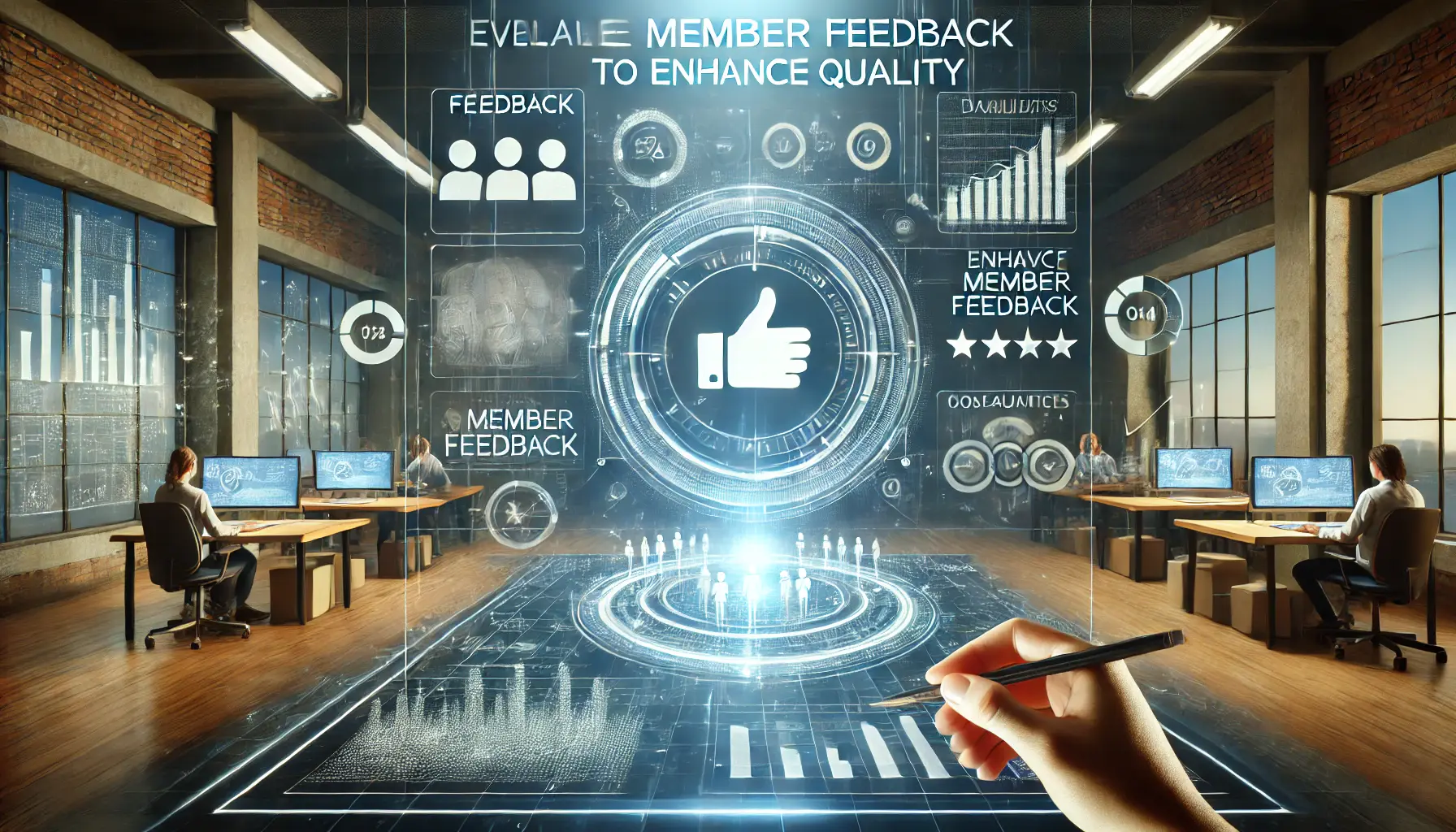
Evaluating member feedback is essential for enhancing content quality and community engagement on LinkedIn.
Evaluating Member Feedback to Enhance Quality
Members have the power to transform your LinkedIn community with their insights and preferences.
You can use this feedback to steer the direction of your community and create content that resonates with them.
- Ask for feedback: Regularly ask your members what type of content and value resonates with them using polls, surveys, or direct messages.
- Trend spotting: Check for repeated comments or similar suggestions across the feedback. This can help you identify areas where your community might need improvement.
- Make changes: Use this feedback and the trends you observe to update your content strategy, community guidelines, or engagement tactics to best serve the needs of your members.

Strategic investment in LinkedIn Ads is essential for scaling and expanding your community.
Investing in LinkedIn Ads to Scale Your Community
Using LinkedIn Ads is a great way to scale your community and reach a wider audience.
Strategically using LinkedIn Ads is the best way to bring in more high-value members to your community and increase your exposure on this platform.
- Leverage your audience: Utilize LinkedIn’s targeting options to get in front of the professionals who are a perfect fit for your community. This includes targeting by industry, job title, location, and more.
- Create compelling ads: Design ads that highlight the benefits of joining your community, such as access to top-notch content, networking opportunities, or industry-specific insights.
- Check your ad performance: Monitor how your LinkedIn Ads are performing and identify which ones are driving maximum engagement and conversions. Use this information to improve future ad campaigns.

Data-driven decision-making and continuous optimization are essential for adjusting your strategy effectively.
Adjusting Your Strategy Based on Performance Data
By studying the growth of your LinkedIn community, you will need to make adjustments after careful reviews and evaluations of the data.
By looking at the results of your efforts, you can tweak your strategy to maximize growth and engagement.
- Review metrics: Regularly review the key engagement metrics and ad performance data you have captured. Determine what’s going well and what needs to be changed.
- Try new tactics: Test out different types of content, engagement experiences, or ad campaigns. Experimenting with new approaches can help you find what works best for your community.
- Iterate and optimize: Through your analysis and testing, continually refine your approach. The more you test and optimize, the better your LinkedIn community will perform.
Regularly measure and optimize your community’s engagement to ensure its growth and continued value.
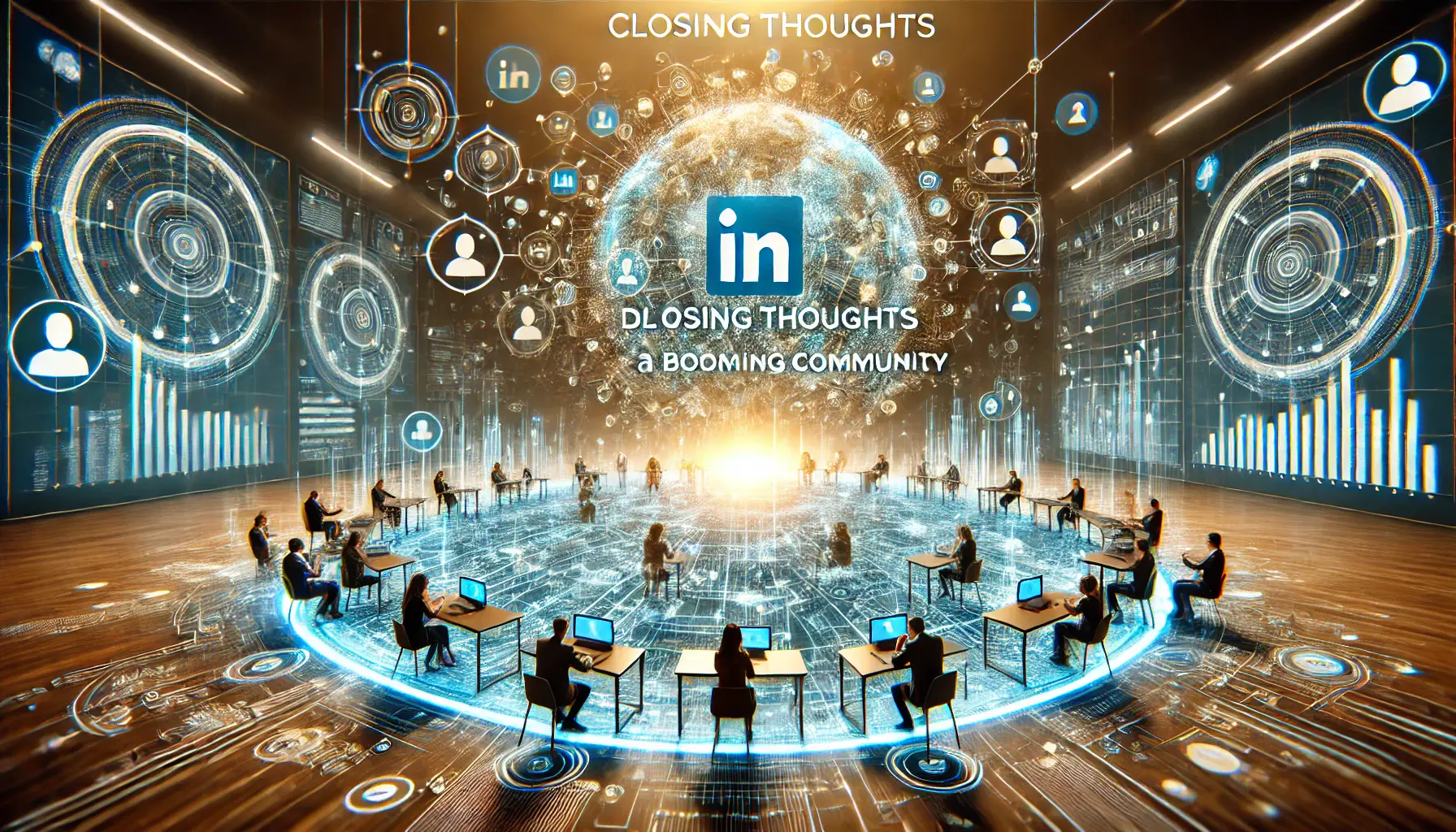
Reflecting on the growth and success of a LinkedIn community highlights the ongoing potential for further development.
Closing Thoughts on Developing a Booming LinkedIn Community
Starting and managing a LinkedIn community is not for the faint of heart as it requires planning, effort, and a deep connection with your members.
In this article, we covered the strategies that can help you build and grow a community on LinkedIn.
Let’s recap the main points to help your community thrive and grow over the long term.

A strong LinkedIn community empowers professional growth and fosters success through active engagement and collaboration.
What a Strong LinkedIn Community Can Do
Behind every great LinkedIn community is clarity.
That’s how you build a community that resonates deeply with its members because it reflects the voice of your prospective members and what they truly want.
Everything else in the community-building process, from content creation to engagement strategies, flows from this understanding.
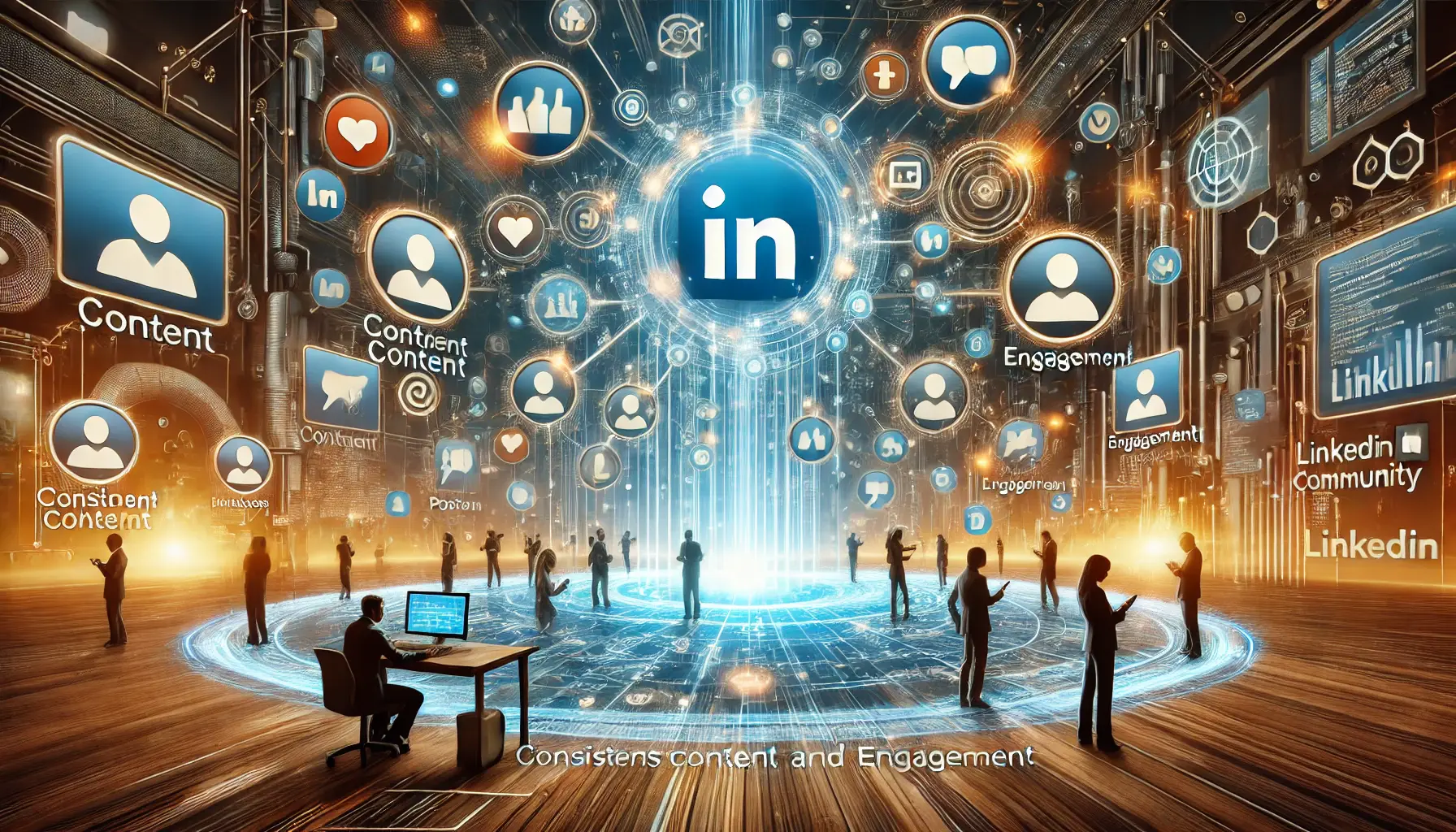
Consistent content and engagement are essential to keeping a LinkedIn community active and thriving.
Lifeblood of Your Community: Consistent Content and Engagement
Consistency is key—not only in content posting but also in how you engage with your LinkedIn community.
To keep your community alive and active, maintain a well-organized content calendar and regularly engage with your members.
Posting value-driven content and fostering conversations not only keeps members engaged but also strengthens their sense of belonging within the community.

Effectively using LinkedIn’s features is key to optimizing community engagement and growth.
How to Use LinkedIn Features in the Best Way
Strategically utilizing LinkedIn features is essential for growing your community.
From creating LinkedIn GroupsDedicated areas within LinkedIn where members can interact and discuss specific topics. for meaningful conversations to hosting events that captivate your audience and leveraging LinkedIn Ads to broaden your reach—each feature plays a crucial role in building an engaging and expanding community.

Data-driven decision-making and continuous optimization are essential for measuring success and adjusting strategies effectively.
Measuring Success and Adjusting Strategies
Continuous improvement is key to success.
Measuring and tracking key engagement metrics allows you to gauge the success of your LinkedIn community.
By analyzing these metrics, gathering member feedback, and making adjustments to your strategies as necessary, you can ensure that your community continues to grow and provide value.
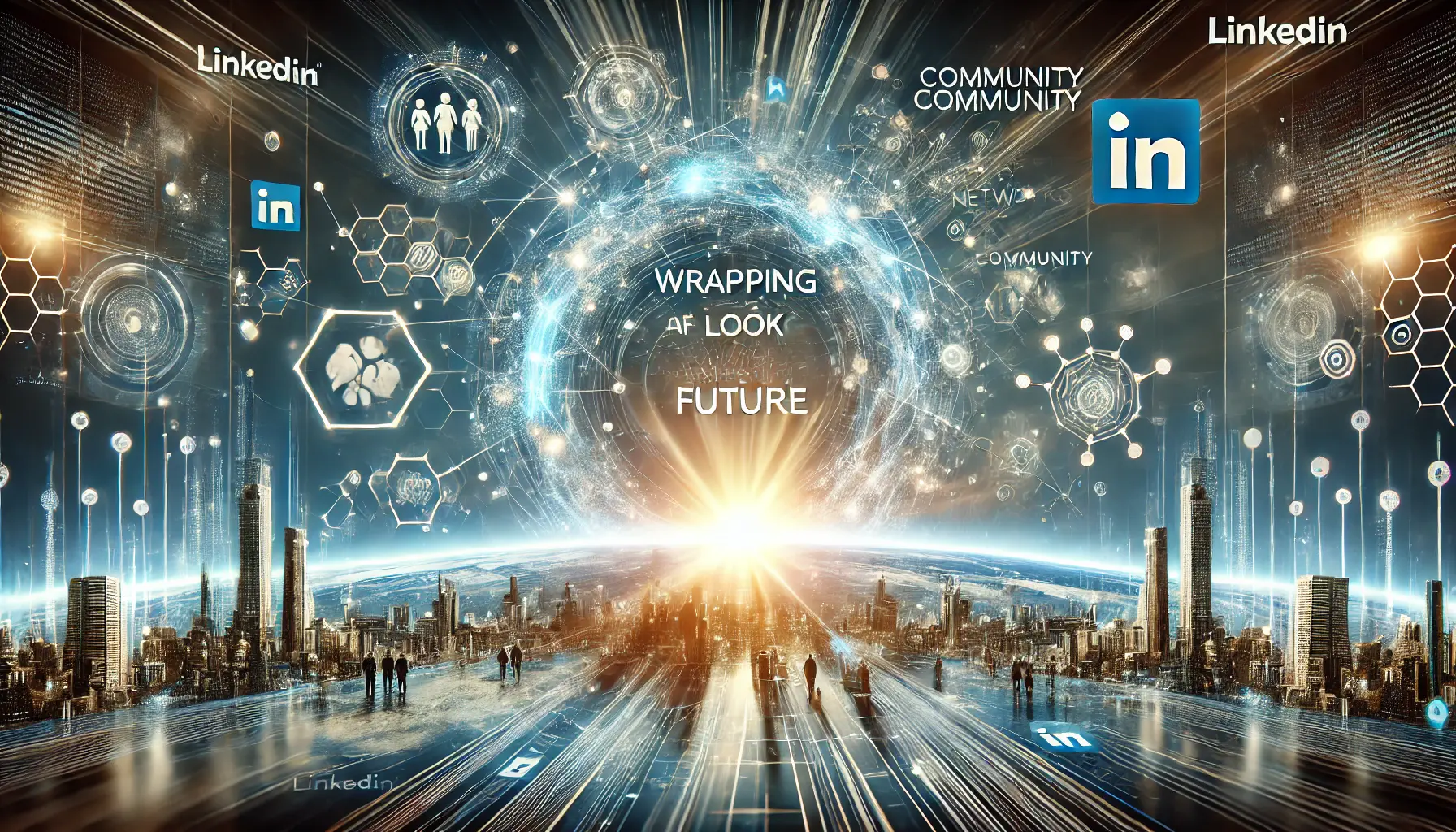
Looking towards the future of your LinkedIn community with optimism and a focus on continued growth and success.
Wrap Up: The Future of Your LinkedIn Community
Creating a LinkedIn community is not a task to check off a list but an ongoing journey.
By employing the tactics discussed in this article—identifying your target audience, keeping them active and engaged, using LinkedIn tools to their fullest, and constantly testing and improving—you can build a community that not only grows in size but also in impact.
At the end of the day, building a successful LinkedIn community is about staying relevant, engaging, and consistently delivering value.
Commit yourself to your vision, listen to your members with respect and attention, and be ready to adapt to their evolving needs.
This is the gateway to building lasting relationships, creating opportunities for growth, and fostering a vibrant LinkedIn community.
Building a successful LinkedIn community requires ongoing effort, relevance, and consistent value delivery.
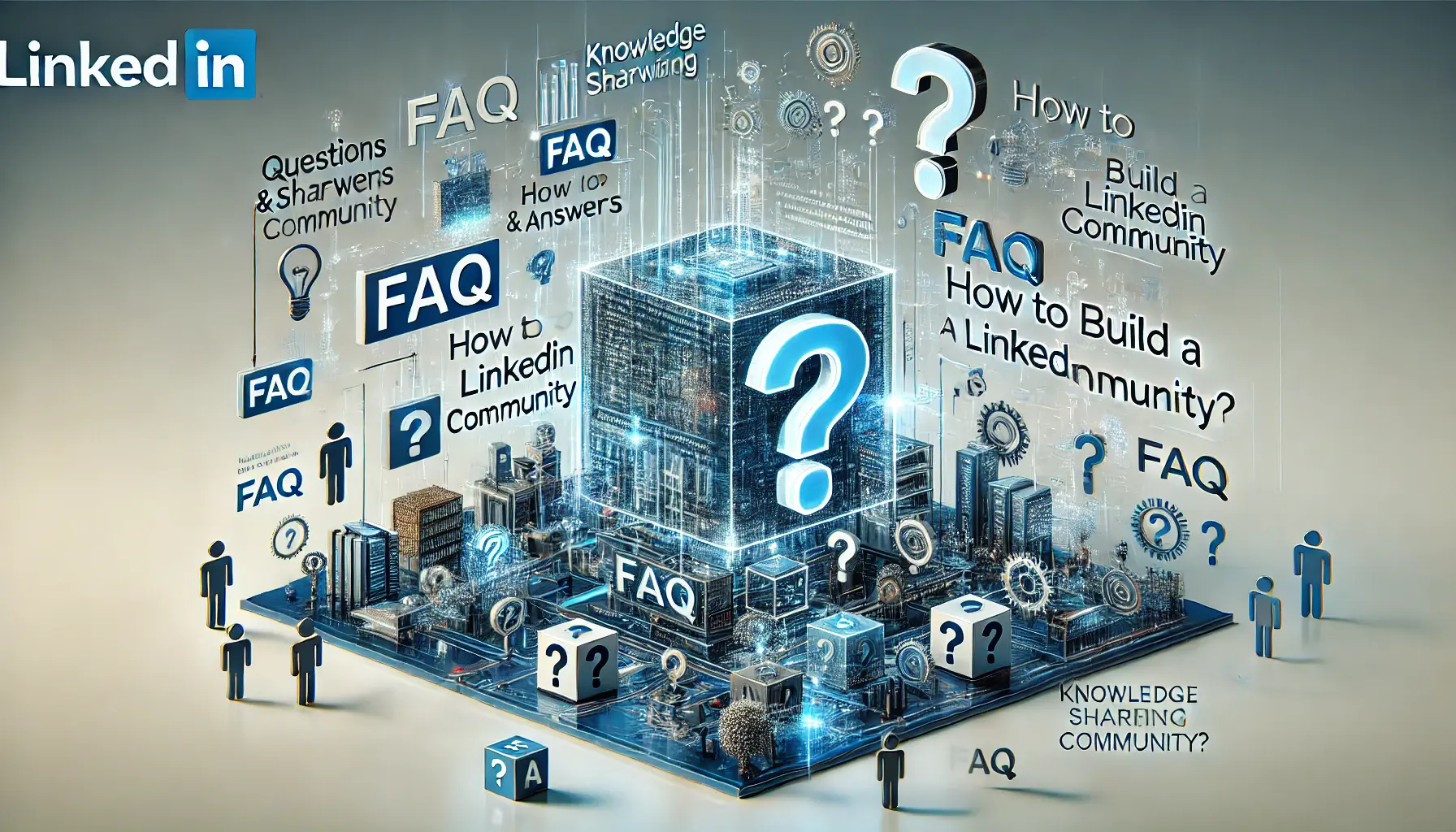
Exploring FAQs provides clarity and guidance on how to successfully build a LinkedIn community.
Enjoyed the article? Let its author handle your social media ads. Visit our service page to get started!
Learn: FAQ on How to Build a LinkedIn Community
This section answers some frequently asked questions about how to create and develop your LinkedIn community.
Consistency is key.
Aim to post 2 to 3 times per week, balancing quality and quantity.
Regularly measure your community’s engagement, adjusting the frequency as needed based on interaction levels.
Value-driven content, which educates, inspires, or provides industry insights, tends to perform best.
Balance long blog posts with videos and interactive content to keep your LinkedIn community engaged.
Encourage engagement by posing open-ended questions, starting discussions, and acknowledging member contributions.
Regular interaction with your LinkedIn community members fosters a strong sense of belonging.
Yes, LinkedIn Ads can effectively target professionals who are most likely to join and benefit from your community, helping you expand your reach.

